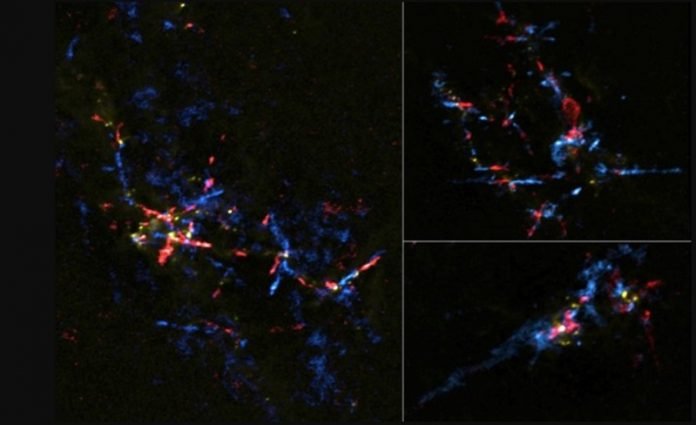
Astronomers have found stellar eggs containing baby stars around the center of the Milky Way galaxy.
To make the discovery, the scientists used NSF’s Atacama Large Millimeter/submillimeter Array (ALMA).
Previous studies had suggested that the environment at the galaxy’s center was too harsh to form stars.
These findings, however, indicate that star formation is more resilient than researchers thought.
Stars form in stellar eggs, cosmic clouds of gas and dust that collapse due to gravity.
If something interferes with the gravity-driven contraction, star formation will be suppressed. There are many potential sources of interference near the galactic center.
Strong turbulence can stir up the clouds and prevent them from contracting, or strong magnetic fields can support the gas against self-gravitational collapse.
To investigate the mysteries of the suppressed star formation, the team used ALMA to observe regions that contain ample gas, but no known star formation.
Surprisingly, the team discovered more than 800 dense cores of gas and dust.
The team again used ALMA to search for energetic gas outflows that are indicative of stars forming in stellar eggs.
Thanks to ALMA’s high sensitivity and high spatial resolution, the researchers detected 43 small and faint outflows in the clouds. Even in the strongly disturbed areas around the galactic center, the scientists say, baby stars still form.
The results of the U.S. National Science Foundation-funded research are published in The Astrophysical Journal.
“These scientists have shown that chemical compounds identical to those found on Earth are important tracers of the birth of stars at the heart of our Milky Way galaxy,” says Glen Langston, a program director in NSF’s Division of Astronomical Sciences.
“This discovery is just the beginning. With more sensitive telescopes in the future, it should be possible to detect the fundamental molecules of life in these regions.”



